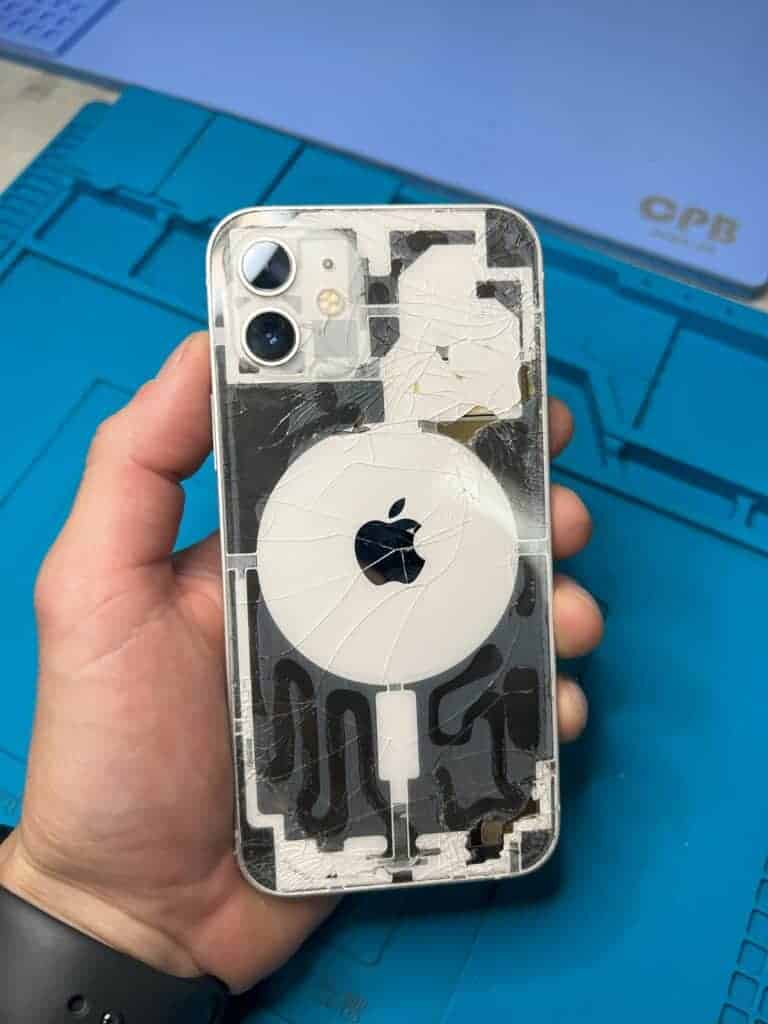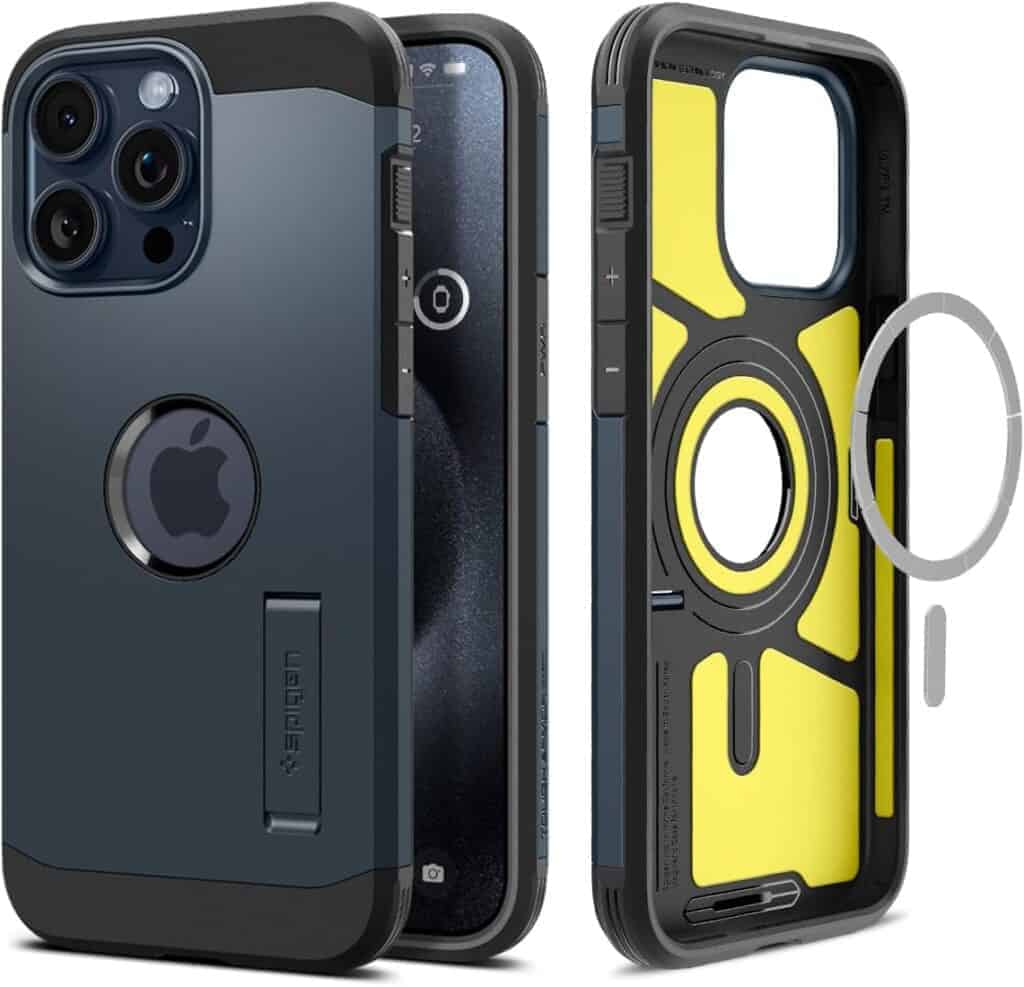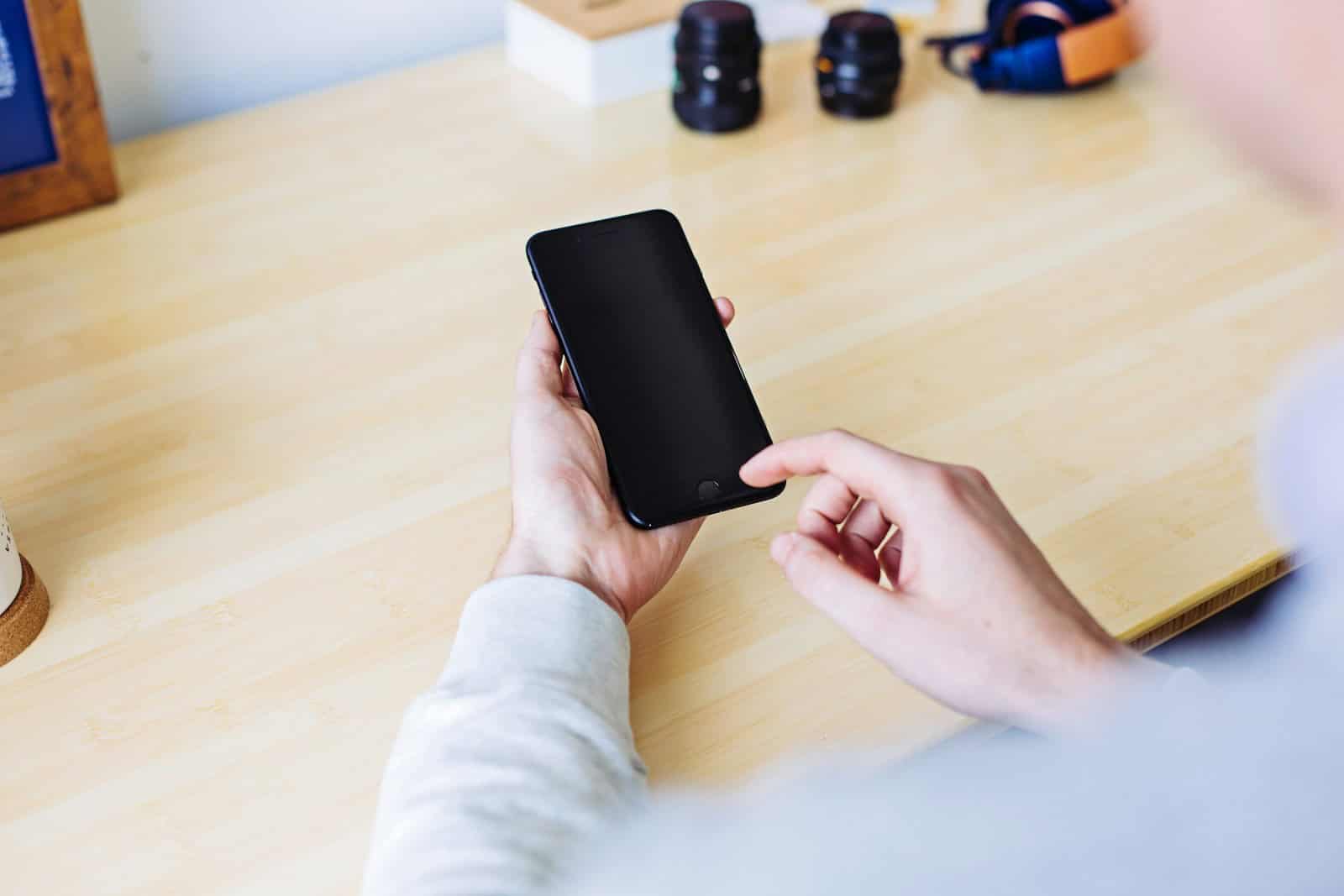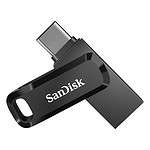Taking good care of your cell phone is essential to ensure it runs optimally, is protected from damage, and lasts as long as possible. Keeping it clean, charging it properly, and updating the software can help improve its performance and protect components such as the battery and screen. These steps can significantly extend your phone’s lifespan and ensure it continues to function smoothly. To protect your investment and enjoy your phone for years to come, it’s important to take these simple steps.
One crucial area where your care can make a difference is in the phone’s battery life and overall health. Avoid letting your phone’s battery drain to zero or overcharging it. Instead, charge your phone when it reaches around 20% and unplug it once it reaches 100% to keep the battery healthy and extend its life. Additionally, to protect your phone physically, use a case and a screen protector to guard against drops and scratches. Regularly cleaning your phone with a microfiber cloth also helps prevent damage from dirt.

Maintaining Your Mobile Device for Longevity and Performance
Protective Measures
Shield your phone from the elements and everyday wear and tear with these protective measures:
- Cases and Screen Protectors: These are your first line of defense against drops, scratches, and cracks. Choose a sturdy case that offers good shock absorption and a screen protector made of tempered glass or other durable materials.
- Waterproofing: Consider a waterproof pouch or case if you’re often around water or live in a rainy climate. Even water-resistant phones can be damaged by prolonged exposure to moisture.
Battery Health
Preserve your battery’s lifespan with these tips:
- Avoid Extreme Temperatures: Heat and cold can damage your battery. Don’t leave your phone in direct sunlight or freezing temperatures for extended periods.
- Optimal Charging: Charge your phone when it reaches around 20% and unplug it before it hits 100%. Avoid draining the battery completely or leaving it plugged in overnight.
- Original Chargers: Use the original charger or a high-quality alternative that’s compatible with your phone. Cheap or counterfeit chargers can damage the battery or even cause safety hazards.
Software Updates
Keep your phone’s software up to date for optimal performance and security:
- Install Updates Promptly: Manufacturers release updates to fix bugs, improve performance, and patch security vulnerabilities.
- Back Up Your Data: Before installing major updates, back up your data to avoid losing important files or settings.
- Check for Updates Regularly: Most phones will notify you when updates are available, but you can also manually check in the settings menu.
Storage Management
Keep your phone clutter-free for smooth operation:
- Delete Unused Apps: Go through your app list and remove any apps you no longer use.
- Clear Cache and Data: Some apps store temporary files (cache) or data that can take up space. You can clear these in the app settings.
- Use Cloud Storage: Consider using cloud storage services like Google Drive or iCloud to store photos, videos, and other files, freeing up space on your phone.
Physical Care
Treat your phone with care to prevent damage:
- Clean Regularly: Wipe down your phone with a soft, slightly damp cloth to remove fingerprints and smudges. Avoid harsh cleaners or abrasive materials.
- Handle with Care: Don’t drop your phone or expose it to excessive force.
- Protect from Dust and Debris: Keep your phone in a pocket or pouch when not in use to prevent dust and debris from entering the ports and speakers.

Table: General Cell Phone Care Tips
| Category | Tip |
|---|---|
| Protective Measures | Use a case and screen protector. |
| Consider a waterproof case if needed. | |
| Battery Health | Avoid extreme temperatures. |
| Charge your phone optimally (20-80%). | |
| Use the original charger or a high-quality alternative. | |
| Software Updates | Install updates promptly. |
| Back up your data before major updates. | |
| Check for updates regularly. | |
| Storage Management | Delete unused apps. |
| Clear cache and data. | |
| Use cloud storage. | |
| Physical Care | Clean your phone regularly. |
| Handle with care. | |
| Protect from dust and debris. |
Taking Your Phone Care Further: Advanced Tips and Tricks
Advanced Battery Care
Want to really maximize your phone’s battery life? Here’s how:
- Calibrate Your Battery: If your phone shows inaccurate battery levels, you might need to recalibrate it. Let the battery drain completely, then charge it to 100% in one go and leave it plugged in for an extra hour or two. This can help the phone accurately read the battery’s capacity.
- Know When to Replace: Batteries don’t last forever. If you notice your phone dying quickly even after a full charge, or if it’s getting unusually hot, it might be time for a new battery. Check with your phone manufacturer or a reputable repair shop for replacement options.
- Understand Battery Types: Most smartphones use lithium-ion batteries, but some use lithium-polymer. Lithium-polymer batteries are generally thinner and lighter, but they can be more prone to swelling.
- Fast Charging Considerations: While fast charging is convenient, using it too often can put extra stress on your battery and shorten its lifespan. Try to use a standard charger whenever possible.
Protecting Your Data and Privacy
Keeping your phone safe isn’t just about physical protection. Here’s how to safeguard your personal information:
- Lock It Up: Always use a strong password, PIN, or biometric lock (fingerprint, face recognition) to prevent unauthorized access to your phone.
- Double the Protection: Enable two-factor authentication (2FA) on your accounts. This adds an extra layer of security by requiring a code from your phone or another device to log in, even if someone has your password.
- Control App Permissions: Be mindful of the permissions you grant to apps. Only allow access to the features they truly need. You can review and adjust app permissions in your phone’s settings.
- Encrypt Your Data: Many phones offer the option to encrypt your data, making it unreadable without a password or PIN. This protects your information even if your phone is lost or stolen.
- Wi-Fi Safety: Be cautious when using public Wi-Fi networks, as they can be vulnerable to hackers. Consider using a VPN (Virtual Private Network) to encrypt your internet traffic and protect your data.
Optimizing Your Phone’s Performance
Want your phone to run like new? Try these tips:
- Resource Hogs: Some apps use more battery and data than others. Identify these resource-intensive apps and close them when not in use.
- Background Activity: Limit background processes for apps you don’t use frequently. This can save battery and improve performance.
- Free Up RAM: Clear your phone’s RAM (Random Access Memory) regularly. This can help speed things up, especially if you have many apps open.
- Restart Regularly: A simple restart can often resolve minor software glitches and improve performance. Aim to restart your phone at least once a week.
Troubleshooting Common Problems
Phones aren’t perfect, and sometimes things go wrong. Here’s how to tackle common issues:
- Overheating: If your phone gets too hot, close unused apps, reduce screen brightness, and avoid using it in direct sunlight. Let it cool down before using it again.
- Slow Performance: Close unused apps, clear the cache, and restart your phone. If the problem persists, you might need to free up storage space or factory reset your device (after backing up your data!).
- App Crashes: Make sure the app is up to date. If it keeps crashing, try clearing the app’s cache or data. You can also try reinstalling the app.
- Connectivity Issues: For Wi-Fi problems, try restarting your router or forgetting and re-joining the network. For Bluetooth issues, try toggling Bluetooth off and on or unpairing and re-pairing devices.
- Unresponsive Screen: Try restarting your phone. If that doesn’t work, you might need to have the screen repaired or replaced.
Dealing with Physical Damage
Accidents happen. Here’s what to do if your phone gets damaged:
- DIY Repairs: While there are DIY kits available for things like cracked screens, be aware that these repairs can be tricky and may void your warranty. Proceed with caution!
- Professional Help: For serious damage, it’s best to seek professional repair services. Look for reputable shops with certified technicians.
- Water Damage: If your phone gets wet, turn it off immediately and remove the battery if possible. Dry it thoroughly with a soft cloth and place it in a container of uncooked rice to absorb moisture. Then, take it to a repair shop to assess the damage.
Phone Hygiene
Keeping your phone clean is more important than ever. Here’s how:
- Disinfect Regularly: Use a disinfectant wipe or a soft cloth dampened with a 70% isopropyl alcohol solution to clean your phone’s screen and surfaces. Avoid getting any liquid in the ports or speakers.
- Clean Those Crevices: Use a cotton swab or a soft-bristled brush to clean the ports, speakers, and other hard-to-reach areas.
Environmental Responsibility
When it’s time to upgrade, dispose of your old phone responsibly:
- Recycle It: Many retailers and manufacturers have e-waste recycling programs. You can also find local e-waste recycling centers.
- Give It a Second Life: If your old phone is still functional, consider donating it or reselling it.
| Category | Tip |
|---|---|
| Protective Measures | Use a sturdy case and screen protector. Consider a waterproof case for added protection. |
| Battery Health | Avoid extreme temperatures. Charge your phone optimally (20-80%). Use the original charger or a high-quality alternative. Calibrate the battery periodically. Replace the battery when needed. |
| Software Updates | Install updates promptly. Back up your data before major updates. Check for updates regularly. |
| Storage Management | Delete unused apps. Clear cache and data. Use cloud storage. |
| Physical Care | Clean your phone regularly with a soft, slightly damp cloth. Handle with care. Protect from dust and debris. Seek professional repair for serious damage. |
| Data Security | Use strong passwords or biometrics. Enable two-factor authentication. Manage app permissions. Encrypt your phone’s storage. Use a VPN on public Wi-Fi. |
| Performance Optimization | Close unused apps. Limit background processes. Clear RAM regularly. Restart your phone periodically. |
| Phone Hygiene | Disinfect your phone regularly. Clean ports and speakers carefully. |
| Environmental Responsibility | Recycle your old phone through e-waste programs. Consider donating or reselling functional devices. |
Key Takeaways
- Simple care steps improve your phone’s longevity
- Proper charging habits keep the battery healthy
- Physical protection prevents damage
Optimizing Battery Health and Usage
To ensure your smartphone lasts longer and performs better, follow these important tips about battery technology, charging habits, settings management, temperature impact, and specific techniques for different phone models.
Understanding Battery Technology
Most smartphones use lithium-ion batteries. These batteries have cells that store and release energy. Each battery has a limited number of charge cycles, which means they can be charged a certain number of times before their capacity starts to decrease.
Avoiding deep discharges and partial charging can help maintain the battery’s health. Fast charging is convenient but can wear out batteries faster. Familiarizing yourself with your phone’s battery type and characteristics can help you make better decisions about its care.
Charging Practices for Longevity
How you charge your phone affects its battery life. Avoid letting your battery run down to 0 percent, as it can damage the cells. Try to keep your battery level between 20% and 80% whenever possible.
Using a slower charger can be better for long-term battery health compared to fast chargers. Also, unplug your phone once it reaches full charge to prevent overcharging. Power banks can be a handy tool for charging on the go, especially to prevent deep discharges.
Managing Phone Settings for Battery Preservation
Adjusting phone settings can significantly save battery life. Lowering the screen brightness and setting a shorter screen timeout can reduce battery drain.
Using battery saver mode or power-saving mode helps manage power consumption effectively. Turning off background app refresh, location services, and switching to airplane mode when not needed can also help conserve battery.
Impact of Temperature on Battery Health
Extreme temperatures can harm battery health. Avoid exposing your phone to high temperatures like leaving it in a car on a hot day. Batteries perform best in moderate temperatures.
Both heat and cold can reduce battery performance and lifespan. If your phone overheats, let it cool down before using it again. Keeping your phone at room temperature is ideal for maintaining battery health.
Battery-Saving Techniques for Different Phone Models
Different phone models, whether iPhone or Android, have unique features that can help save battery. For iPhone, enabling low power mode when your battery is low can extend its life.
For Android phones, turning off animated wallpapers and using dark mode on OLED screens can help. Flagship phones often have high refresh rates, which can be reduced to save battery. Check your device’s settings for specific battery optimization features.
By following these strategic tips and understanding battery dynamics, you can optimize your phone’s battery health and usage, ensuring longevity and better performance.
Frequently Asked Questions
Proper maintenance and preventive measures can significantly extend a cell phone’s lifespan. Managing charging habits, keeping software up to date, and protecting the device from physical damage are crucial steps.
How can I properly maintain my mobile phone to extend its lifespan?
Keep your phone clean by using a soft cloth to wipe the screen and body. Avoid exposing it to extreme temperatures. Use a protective case to guard against falls and scratches. Regularly restart the device to keep it running smoothly.
What are the best practices for charging and battery management to optimize cell phone longevity?
Avoid letting the battery drop below 20% or charging it to 100%. Use the charger provided by the manufacturer. Do not use the phone while it’s charging, as this can cause the device to heat up. Turn off unused features like Bluetooth and Wi-Fi to save battery life.
What preventive maintenance techniques are effective for smartphones?
Regularly update your apps and operating system. Clear the cache and unused files to free up space. Check for unusual apps or activities that might indicate a virus. Use antivirus software if necessary.
What are the signs of wear and tear to watch out for in cell phones?
Look for decreased battery life even after full charge, apps crashing frequently, or the phone overheating. Physical signs include cracks on the screen, scratches, and unresponsive buttons. Slow performance can also be a sign of internal issues.
How can I protect my mobile device from physical damage?
Use a high-quality case and a screen protector. Avoid placing the phone in tight pockets where it might bend. Keep it away from water and moisture. Be mindful of where you place your phone to avoid accidental drops.
Are there any recommendations for software updates and management to ensure a cell phone’s optimal performance?
Enable automatic software updates to ensure your phone has the latest security patches. Regularly check for app updates. Remove unnecessary apps that you do not use. Perform a factory reset if the phone’s performance drops significantly.







